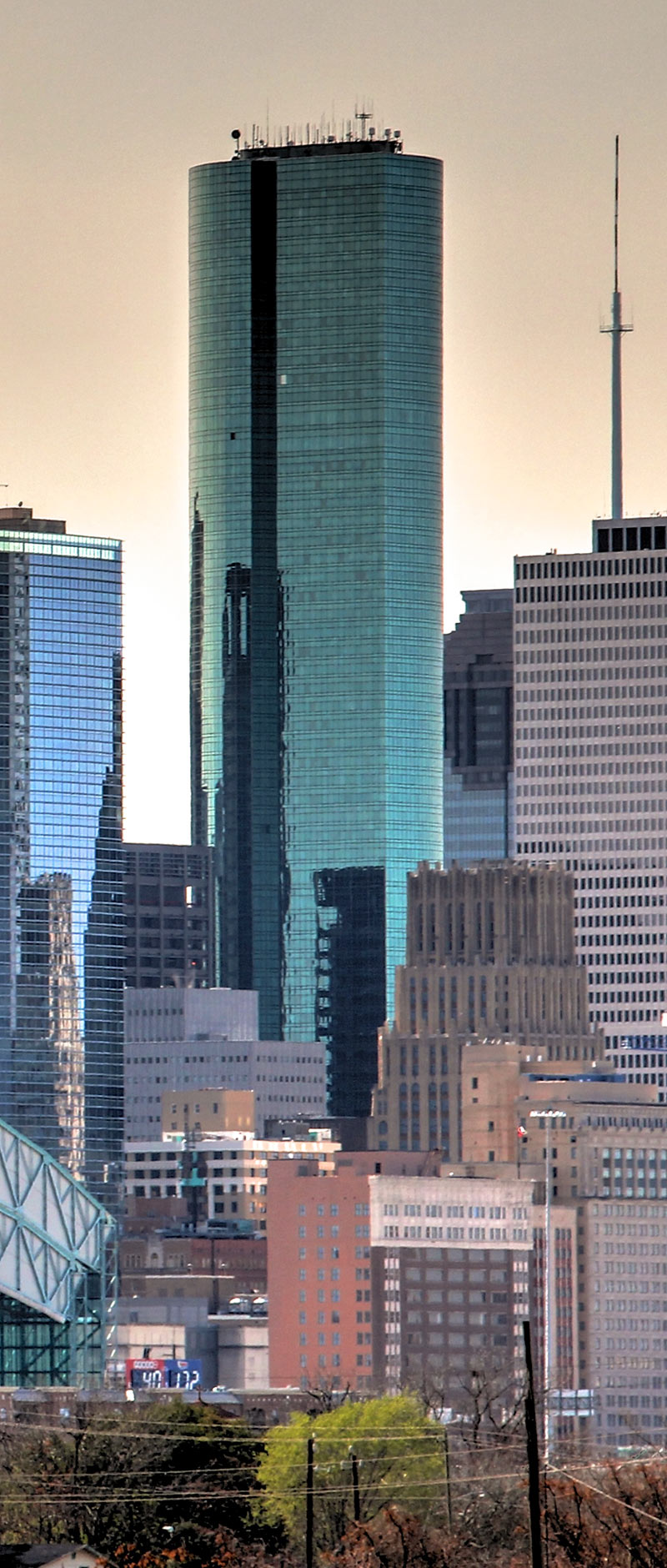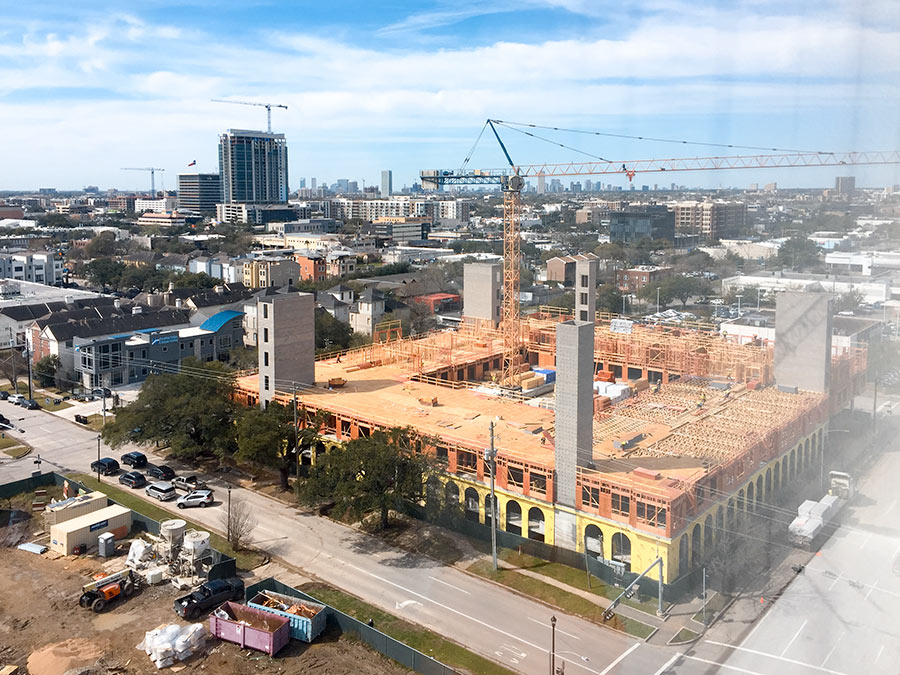SHAKING AT THE TOP OF A HOUSTON SKYSCRAPER IN THE MIDDLE OF A HURRICANE  Houstonians who were around for Hurricane Alicia in 1983 might remember that the Wells Fargo Plaza tower downtown — then known as the brand-new Allied Bank Plaza — ended up losing more than 3,000 glass panels in the storm. But did you know that the building that night became the site of one of the few live wiggling-skyscrapers-in-a-storm experiments ever conducted? Engineers Robert Halvorson and Michael Fletcher spent the night of the hurricane in the 71-story tower’s unfinished top floor, just to see how much the building would sway; more than 30 years later, they described their experiences to Washington Post reporter Emily Badger. The peak acceleration of 43 milli-g’s they recorded — enough back-and-forth and twisting to make it impossible for them to walk upright — turned out to be “give or take, exactly the same thing that had been predicted by the wind tunnel” before the structure was built. [Gizmodo] Photo of Wells Fargo Plaza: Jackson Myers
Houstonians who were around for Hurricane Alicia in 1983 might remember that the Wells Fargo Plaza tower downtown — then known as the brand-new Allied Bank Plaza — ended up losing more than 3,000 glass panels in the storm. But did you know that the building that night became the site of one of the few live wiggling-skyscrapers-in-a-storm experiments ever conducted? Engineers Robert Halvorson and Michael Fletcher spent the night of the hurricane in the 71-story tower’s unfinished top floor, just to see how much the building would sway; more than 30 years later, they described their experiences to Washington Post reporter Emily Badger. The peak acceleration of 43 milli-g’s they recorded — enough back-and-forth and twisting to make it impossible for them to walk upright — turned out to be “give or take, exactly the same thing that had been predicted by the wind tunnel” before the structure was built. [Gizmodo] Photo of Wells Fargo Plaza: Jackson Myers





Good lord. Being at the top of a massive skyscraper with it moving enough to knock me off my feet. This is basically an exact replica of a nightmare I have had many times.
I used to hang plumb bobs from my cubicle to watch the building sway when I worked there. Doors swing open and closed, we even had file cabinet drawers open up and then tip over one time. The fun part is when the double-decker elevators are shut down because the shaft becomes too bent by the wind. The sound is like an old creaking ship. I enjoyed it.
Stephen: “I enjoyed it.” <— hehe, wtf, PSYCHO! :-)
“give or take, exactly the same thing that had been predicted by the wind tunnelâ€
“exactly”. I do not think this word means what you think it means.
Reminds me of fun times in the Transco (Williams) Tower in about 2002 during a storm that came in south of Houston. Worked probably around the 40th floor and was one of the few who turned up for work. The building noises were scary enough but then I went to the ladies room and the water was sloshing around in the toilets like we were on a cruise ship. I went home early.
The prospect of sway that’s strong enough to topple file cabinets or other furniture would bother me, particularly if that happened throughout the building more or less simultaneously. Structural engineers may not have accounted for that sort of a force vector relative to the load-bearing characteristics of a building under heavy sway. Also, forces like these surely fatigue the metal over time. I wonder what the physical life expectancy of a structure like this is and what has to be done (if anything can be done) in order to extend it.